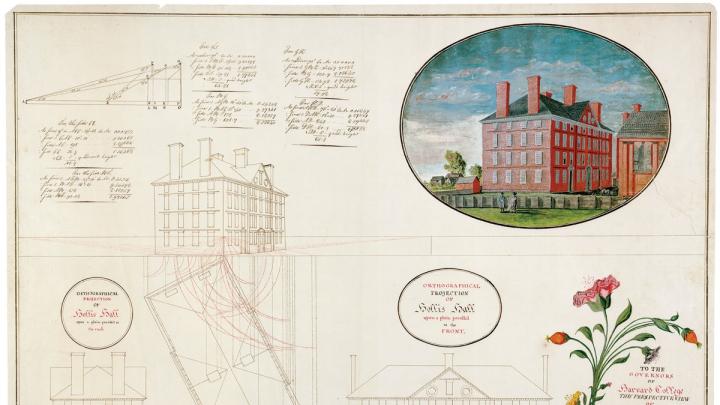Writing anonymously in the Harvard Crimson, a student lamented recently that the “quantitative reasoning” requirement was the “humanities student’s biggest nightmare.” Courses in this area, say professors, introduce students to mathematical and quantitative modes of thought. Excruciating, of course, but not unprecedented. From the 1780s into the 1830s, juniors and seniors were required to produce detailed mathematical equations and illustrative drawings and diagrams on broadside paper to prove mastery of geometry and algebra. Most of these “mathematical theses” concerned linear perspective, astronomy, and surveying, and they are thought to be the earliest evidence of formal instruction in the use of perspective in North America. The one shown here, more than two feet wide, is an orthographical projection of Hollis Hall (ordinarily a dormitory but briefly a barracks for soldiers during the Revolution) by Jonathan Fisher, done in 1791.
The Harvard Archives, presided over by archivist Megan Sniffin-Marinoff, has more than 400 such drawings. They are a small part of the riches she and her staff reveal in a newly launched website, Harvard in the 17th and 18th Centuries (http://hul.harvard.edu/huarc/h1718). It is an engaging guide, with 13,000 digitized pages, to mostly unpublished manuscript items—diaries, correspondence, University records, maps, student notebooks, lecture notes—that form the documentary history of early Harvard.
Young Fisher survived his mathematical thesis and earned his A.B. in 1792 and his A.M. in ’95. He became minister of the Congregational Church in Blue Hill, Maine, and was known also for his endeavors as an artist, architect, furnituremaker, and author of a children’s book with illustrations of every creature named in the Bible.








